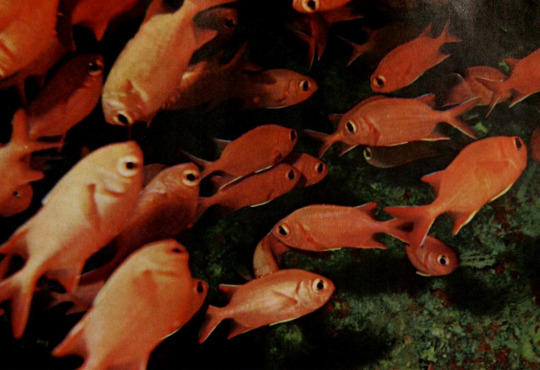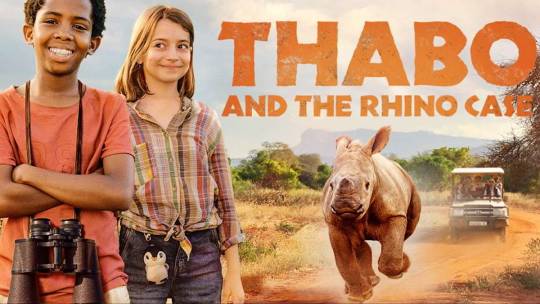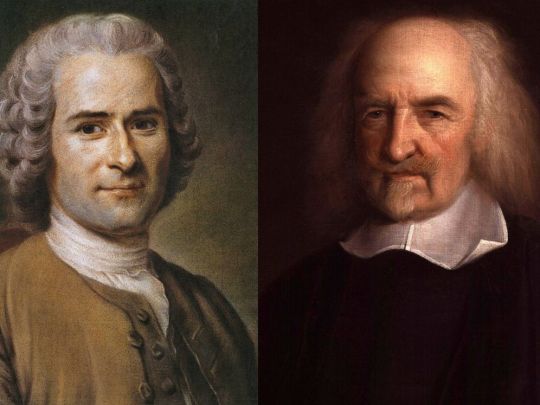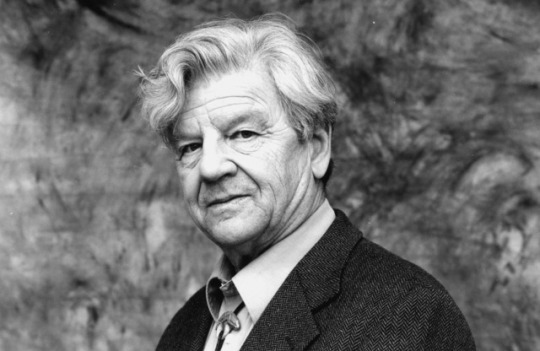#eibl-eibesfeldt
Explore tagged Tumblr posts
Text

«Anticipemos ya que el señalar el carácter innato de un comportamiento o una disposición no implica en ningún modo que sean inaccesibles a la influencia de la educación ni que se deban tomar por naturales en el sentido de que tengan un fin biológico determinado. Un comportamiento de origen filogenético puede perder su función original. Así pudo un fuerte instinto de agresión haber provocado en otro tiempo el desarrollo intelectual del hombre por la aguda competencia entre los grupos humanos y haber asegurado la difusión del género humano por toda la tierra. Pero hoy un exceso de agresividad podría conducir al autoaniquilamiento. No vamos, pues, a confirmarla porque sea innata en nosotros, y debemos por el contrario esforzarnos en controlarla. La etología nos ofrece con el estudio de los fundamentos las condiciones necesarias para una terapia en todo caso necesaria.»
Irenaüs Eibl-Eibesfeldt: Amor y odio: historia natural de las formas elementales de comportamiento. Siglo XXI Editores, pág. 7. México, 1972
TGO
@bocadosdefilosofia
#eibl-eibesfeldt#irenaüs eibl-ebesfeldt#amor y odio#historia natural de las formas elementales de comportamiento#etología#comportamiento#disposición#innato#insociabilidad#agresividad#biología#fundamento biológico#función#finalidad biológica#aniquilamiento#autoaniquilamiento#desarrollo intelectual#el más fuerte#terapia#control de la agresividad#origen filogenético#competencia#grupos humanos#género humano#naturaleza#naturaleza humana#evolucionismo#teoría de la evolución#selección natural#teo gómez otero
4 notes
·
View notes
Text

Squirrelfish in a dark cave orienting either to gravity (right side up) or a light on the cave floor (upside down) By: I. Eibl-Eibesfeldt From: Life Nature Library: Animal Behavior 1965
530 notes
·
View notes
Text
Thabo and the Rhino Case
Thabo and the Rhino Case (2023) #MaraEiblEibesfeldt #LitlhohonolofatsoLithakayane #AndreaSawatzki #AvaSkuratowski Mehr auf:
Jahr: 2023 Genre: Abenteuer / Comedy / Familienfilm Regie: Mara Eibl-Eibesfeldt Hauptrollen: Litlhohonolofatso Litlhakayane, Andrea Sawatzki, Ava Skuratowski … Filmbeschreibung: Thabo (11) möchte Privatdetektiv werden. Nur ist sein Zuhause, ein kleines afrikanisches Dorf, der ruhigste Ort im Savannenparadies… Doch die Dinge ändern sich schlagartig, als ein Nashorn im Safaripark wegen seines…

View On WordPress
0 notes
Text
“The behavior of an animal is not..built up of larval reflexes which become integrated as primary units of behavior into secondary, higher functional units, because the initial movements are always of a spontaneous nature [the spontaneous activity of the central nervous system].”
Irenaus Eibl-Eibesfeldt
3 notes
·
View notes
Text
"Irenäus Eibl-Eibesfeldt [...] was an Austrian (not Australian)"
obsessed with the parentheses
0 notes
Photo

Im Spinnwebhaus (2015) Mara Eibl-Eibesfeldt.
1 note
·
View note
Text
“ Per noi occidentali baciare è sempre e comunque un fatto di labbra. Mentre la filematologia, cioè la scienza dei baci, dice chiaramente che in molte culture le manifestazioni amorose non sono necessariamente orali. Ma impegnano altre parti del corpo. Gli Inuit, meglio noti come Eschimesi, per esempio, si scambiano effusioni, ma anche convenevoli, strofinandosi teneramente o calorosamente il naso. E cosí pure Malesi e Polinesiani. Charles Darwin sostiene che questo approccio nasale risalga all’età della pietra e rappresenti una forma di riconoscimento olfattivo. Una manifestazione di compatibilità corporea. Che produce empatia, simpatia, legame, ma anche attrazione, passione, simbiosi. Tanto che in alcune regioni dell’India antica al posto di baciare si usava il verbo annusare. Chi avvicinava le labbra al viso del partner, invece che «ti adoro» diceva «ti odoro». E nella Cina tradizionale, ci si baciava accostando il naso alle guance e soffiando leggermente per far arrivare il proprio profumo. Del resto, è cosa ben nota che nell’attrazione erotica giochi una forte componente olfattiva. Insieme a quella tattile e gustativa. Tutte e tre presenti nel bacio. Che, in piú, chiama in causa anche l’udito. Visto che lo schiocco, lo smack, il mwah, il chu, il pciú, il risucchio e altri suoni rappresentano l’essenziale componente rumoristica di ogni plaisir d’amour. In realtà, come suggerisce l’etologo Eibl-Eibesfeldt, il bacio labiale e linguale è molto piú diffuso di quanto appaia a prima vista. Intanto per l’origine filogenetica del gesto, derivante da operazioni alimentari ancora presenti e osservabili nelle scimmie antropomorfe. In questo senso baciarsi rappresenta la ritualizzazione di quello che in tempi remoti è stato uno scambio di cibo: nutrizione e protezione. E poi, anche nelle società in cui sembra assente, il bacio sulla bocca a un’osservazione piú approfondita può rivelarsi presente, seppure in forma latente. Infatti sono molte le culture che accanto alla confricazione nasale o frontale, praticano anche il bacio labiale. Ma ragioni di tabú, segretezza, intimità culturale hanno confinato questo gesto in una sorta di semiclandestinità. È il caso della Nuova Guinea, di Bali o del Giappone. Nel Paese del Sol Levante si dice di solito che il bacio sia stato introdotto dagli Europei. Ma il bacio linguale anche in passato non era affatto sconosciuto, tant’è vero che in certe fonti medievali si mette in guardia la coppia dall’indulgere a questa forma di effusione amorosa. Ecco perché, piú che i rapporti di coppia, a provare l’eventuale presenza o assenza del bacio, è casomai la relazione madre/figlio, che è molto meno carica di tabú e quindi piú facilmente osservabile (Eibl-Eibesfeldt 1977, p. 175). In effetti nel Giappone tradizionale il bacio tra adulti ha poco a che fare con l’affetto e molto con il desiderio, come mostrano le stampe erotiche chiamate shunga, dove compare il kuchisū, cioè letteralmente «succhiare la bocca». Si tratta di un gesto trasgressivo di estrema licenziosità e fortemente stigmatizzato soprattutto se a compierlo sono i religiosi, perché si ritiene che la loro bocca sia destinata esclusivamente a trasmettere gli insegnamenti buddisti (Shigeru 1984, pp. 466-67). “
Elisabetta Moro, Marino Niola, Baciarsi, Giulio Einaudi editore (collana Vele), 2021 [Libro elettronico]
#Elisabetta Moro#Marino Niola#Baciarsi#saggistica#baci#antropologia culturale#saggi#letture#leggere#citazioni#Charles Darwin#Malesia#Polinesiania#Inuit#Eschimesi#India antica#empatia#simpatia#legame#attrazione#Bali#passione#simbiosi#Cina tradizionale#Eibl-Eibesfeldt#tabù#filematologia#intimità#Nuova Guinea#Giappone
23 notes
·
View notes
Text
Mund-zu-Mund-Fütterung.
“Irenäus Eibl-Eibesfeldt hat ausführlich die Kuss-Fütterung beim Menschen dokumentiert, die zum Beispiel bei den Himbas in Afrika auch heute noch praktiziert wird. Die Mutter kaut dabei die Nahrung für ihr Kind vor und überträgt sie dann per Mundkuss.” Stangl, W. (2019). Stichwort: ‘Philematologie’. Online Lexikon für Psychologie und Pädagogik. Prevalence of premastication among children aged…
View On WordPress
#2016#2018#2019#China#diarrhoea#Durchfall#Eibl-Eibesfeldt#Himba#Kuss#Laos#Mund-zu-Mund-Fütterung#premastication#USA
0 notes
Quote
In humans, hostility between groups leads to the exaggeration of any preexisting differences between the groups, or to the creation of differences if there were none to begin with. You may have thought it was the other way round—that differences lead to hostility—but I believe it is more a case of hostility leading to differences. Each group is motivated to distinguish itself from the other because if you don’t like someone you want to be as different from them as possible. So the two groups will develop different customs and different taboos. They will adopt different forms of dress and ornamentation, the better to tell friend from foe in a hurry. They may even develop different languages. Eibl-Eibesfeldt observed, 'Humans show a strong inclination to form such subgroups which eventually distinguish themselves from the others by dialect and other subgroup characteristics and go on to form new cultures. . . . To live in groups which demarcate themselves from others is a basic feature of human nature.' This process is called pseudospeciation. If pseudospeciation was also a basic feature of pre-human nature, it could have led to a dramatic speeding up of evolution. Groups split, demarcate themselves from each other, and go to war. War puts an end to interbreeding (or drastically cuts down on it) and now we have the preconditions for true speciation. If one of the daughter groups happens to be more successful at waging war, it may wipe out the other. Of course, it may simply outcompete the other group, but that’s a lot slower.
Judith Rich Harris, The Nurture Assumption: Why Children Turn Out the Way They Do
7 notes
·
View notes
Text

«Esta tesis de la criatura humana insociable y asesina no es nueva. Ya el filósofo ingles Thomas Hobbes (1588-1679) la profesaba al atribuir al hombre solamente el instinto de conservación de sí mismo y la ambición de poder. La lucha que necesariamente ocasionaba esta tendencia de todos contra todos sólo se evita, según Hobbes, mediante las autoridades que imponen al hombre la unión a pesar suyo.
Más también es antigua la tesis opuesta, según la cual el hombre era pacífico y amistoso y fue la civilización quien lo corrompió y lo hizo agresivo (Jean Jacques Rousseau, 1712-1778). La querella en torno a la “verdadera” naturaleza del hombre dura todavía, y las posiciones extremas de una y otra doctrina tienen sus defensores.»
Irenaüs Eibl-Eibesfeldt: Amor y odio: historia natural de las formas elementales de comportamiento. Siglo XXI Editores, pág. 6. México, 1972
TGO
@bocadosdefilosofia
#eibl-eibesfeldt#irenaüs eibl-ebesfeldt#amor y odio#historia natural de las formas elementales de comportamiento#etología#sociabilidad#insociabilidad#agresividad#hobbes#thomas hobbes#autoconservación#poder ambición de poder#ambición#autoridad#autoridades#poder#poder político#instinto de conservación#amistoso#civilización#rousseau#jean Jacques rousseau#naturaleza#naturaleza humana#teo gómez otero
2 notes
·
View notes
Text

Parrot finch chick By: I. Eibl-Eibesfeldt From: Life Nature Library: Animal Behavior 1965
198 notes
·
View notes
Text
Falsche Fremdenliebe: Migrationskritik aus evolutionsbiologischer SichtCOMPACT+
Compact: Freispruch für Zuwanderungskritiker: Der Verhaltensforscher und Konrad-Lorenz-Schüler Irenäus Eibl-Eibesfeldt identifizierte eine „Fremdenscheu“ schon vor Jahren als natürlichen Impuls und warnte vor übertriebenem Altruismus. In seinem Buch „Völkerpsychologie“ begibt sich Anthropologe Andreas Vonderach auf die Spuren Eibl-Eibesfeldts und schreibt, was unser Volk von anderen unterscheidet. Hier mehr erfahren. Mehr als 15 Jahre bevor Thilo Sarrazin mit [...] Der Beitrag Falsche Fremdenliebe: Migrationskritik aus evolutionsbiologischer SichtCOMPACT+ erschien zuerst auf COMPACT. http://dlvr.it/SGYxhK
0 notes
Text
Three Types of Love
This will be a light and quick attempt to reach a better understanding of the multiple essences that lie beneath the confusion surrounding the definition of love.

I think the dictionary definitions of love are decent. They basically say it's these different kinds of feelings of attachment. Fair enough. I'm going to try to do better based on my own observations in life. A few years ago I gave a speech on the two types of love. My thoughts on the subject are becoming more sophisticated, and hopefully more useful.
First, we have valuation. This can be of a person or a pretzel with that weird plastic-like cheese. It's a spectrum. You value some things more than others. This basic observation is important in the work ranging from the economist Ludwig von Mises to the psychologist Viktor Frankl. Value hierarchies are how we navigate life.
I used to go to this breakfast restaurant in Muskegon called Mr. B's Pancake House when I worked in the bookstore at Baker College. I loved the farmer's omelet with some special changes that I had worked on with the owner, Dave. One of the cashiers had "Love" and "Hate" tattooed across his knuckles. I asked him about it one time. He said it was just a stupid decision when he was younger. I thought that was a horrible response, but there were other people waiting so I didn't dive into it with him. But, everything every human does is based on value scales ranging from love to hate.
Second, identity fusion. It's possible for you to see yourself so closely associated with something or someone else that you don't realize you're separate. This is most common in romantic relationships, but it can be with a sports team, or anything else. There was a case of a woman that could identity fuse with anything, including walls. She was at a mental institution, but would sometimes leave and walk around the city. She could interact with anyone and no one ever gave her any trouble, even though she was a tiny woman, and sometimes she would walk up to gangsters in the middle of the night. An odd ability to fuse identities with people is one of the traits of charismatic people, but when that fusion is broken it can mentally break you. You don't realize you're separate, so it feels like you're being ripped in half and is difficult to withstand.
Third, the incorporation of the other person's value scales into your own. This seems somewhat similar to identity fusion, but is different. If you're conscious that you're providing that level of consideration then it can be a mature and stable type of love, while identity fusion is not.
If you want to make a connection with someone good advice is that you have to be interesting and interested. Both of these things have to happen for both people at the same time for them to become very close. Once consideration is provided on both sides so that the individuals are willing to somewhat adjust their value scales to incorporate the other person's, then a bond has formed.
These three ideas are my own formulations of things, and I think it's a decent way of approaching the subject. There are other ways, many other ways. I like the founder of human ethology, Irenaus Eibl-Eibesfeldt, and he dives into pair bonding quite well in a couple of books. I also like the zoologist Desmond Morris, but I'll leave their insights for them to explain.
I think it's possible that the third idea I have here, the mutual incorporation of value scales may be something like what people are talking about when they say "us" with a deeper and more significant meaning than normal. It's the co-creation of a unique entity in a specific context. This is the "us" that is talked about in the love story "The Bridges of Madison County". At least, that's my best formulation of it so far.
________________________________________________
Read more of what Jeff deems worthy of attention at: http://www.JeffreyAlexanderMartin.com
0 notes
Text
"L'humanité en tant qu'unité biologique n'existe pas."
Irenäus Eibl-Eibesfeldt, 1928 - 2018 à Starnberg, fondateur de l'éthologie humaine

0 notes
Text
quindici giugno
Paolo Uccello, Caccia notturna, 1470 ca
Cigno bianco
Cigno bianco, cigno immacolato, i tuoi sogni sempre celando, tranquillamente argenteo, tu scivoli, l’acqua increspando.
Sotto di te – il baratro silenzioso, senza risposta, senza saluto, ma tu scivoli, immergendoti nel fondo di aria e luce intessuto.
Sopra di te – l’etere senza fine con la fulgida volta stellata. Tu…
View On WordPress
#Alberto Sordi#Aldo Aymonino#Carlo Porta#Eduardo Lago#Erroll Garner#Hugo Pratt#Igor Sibaldi#Irenäus Eibl-Eibesfeldt#Jaki Byard#Kobayashi Issa#Luciano Cecchinel#Nicolas Poussin#Paolo Uccello#Ramón López Velarde
0 notes
Text
Shamanism: a glance into my paper so far
The basis of this “shamanism shit” is POWER. Traditionally socio-economically, however in the last segment of this text i will briefly discuss the Shuar Federation and how power in Jivaro culture has come to encompass political and ‘western wealth’.
Much of the research of global and local shamanism focuses on Shamanic Knowledge.
In Shuar/Jivaro culture the relationship between power and knowledge, the former being a result of an individual's possession of the latter, is implicit.
Integration of the linguistic side of the relationship between power/knowledge and feeling/thinking and the heart (Power and knowledge by Hendricks)
Vertical vs Horizontal shamanism, jivaro as horizontal, but what about the federation ???
The relationship between colonization and Jivaro power is inversely intuitive. Contrary to what ‘conquest’ implies, Jivaro elite actually harness the knowledge of the white people to advance their own socio-economic standing. This makes perfect sense to an Jivaro person, as traditional beliefs gives individuals with individualistic/unique knowledge much power and prestige. This comes from the inherent belief that travel brings specific and purposeful information to be used and shared by the individual. Now i must define travel, of course this refers to the physical journey through the lands of present day ecuador and western amazonia, the ability to complete this type of journey meant an individual was/is physically fit and capable as well as knowledgeable in navigation and relationship to the native plants and animals. More interestingly, based on the increasing interest of western scholars, is the knowledge and process by which individuals, usually established or training “shamans” embark upon metaphysical journeys of the mind, in our case, under the influence of hallucinogenic/psychedelic drugs. The state is often referred to as an ‘altered state of consciousness’. These shamanic journeys allow for the Jivaro to not only real the Real and True world but allow for the desarrollo of the mind in an individualistic way.
Peter Gow -from Shamanism, History and the State- touches on both of these journeys sldjkblvfdnlskjvgkbd He look at post-contact Aguaruna societies and analyzes the concept of razo with the Aguaruna and the relationship between the “forest” and the “city”. These terms are in quotes because they refer to the groups of shamanic practicing people from each environment. With emphasis on the lack of formal conquest by European powers…..ever, he lays out a circular diagram of where “city” and “forest” shamans place value in knowledge: the forest looks to the city and the city looks to the forest. Neither place much if any respect on the shamanic superiority of their own. Power comes from knowledge and knowledge comes from the unknown often in the form of the other.
This knowledge is also self-confirming (Taylor- the souls body and its states). Ideas/cultural knowledge exist universally within a jivaro society and they therefor find their validity/acceptance because they are universal knowledge to everyone. These ideas are not questioned.
This is contrasting to Jeffery Blick’s -Genocidal Warfare - argument (based on Eibl-Eibesfeldt) about warfare that in based on the Jivaron tendency for cultural pseudospeciation, in which the members of any given society have such a sort of superiority complex that they find other groups so inferior justification for genocidal warfare - as opposed to blood revenge- can be found and rightfully acted upon.
Violence from the Jivaro concepts of the soul
Healing shamans must always take cation in the display of their power, for the greater the healer the more dangerous the killer, both of which shamans have the power to do. For similar reasons, turning away a request for healing is highly unlikely for a shaman to to in Aguaruna do the damage it would inflict on one’s socioeconomic power basis. They advance their own power as healers whenever they can to further reputation as good -among other reasons.
Perhaps these two arguments can both be true on the premise that Gow refers only to the groups inferiority in terms of shamanic knowledge (based on the allure of the unknown) whereas Blick is referring to the cultural divides that the Federation of “city” culture is now tending to erase.
Terms: I would argue, unlike M. Brown, that “magic” is not effective term
Use of indigenous term for shamanism is MOST effective but only when focusing on local shamanism and not the global phenomena.
Colonization and spirits, all seeing god, absolutely tied to original native souls.
Adoption of christianity and it’s ~especially~ economic implications.
The relationship of ethno- and biomedicine, exemplified in the practice of Yajkush the shaman, show how the Jivaro people show an apparent dual knowledge. That of their own culture and the white man medicine (we also see this in the mestizo medicine) both pertaining to the use of needles. The jivaro shamans use european influence to better their own perceived socio-economic status. Also relating to this dual knowledge and its attach to power in jivaro culture is the relationship between western efforts to “develop” and “biomedically based international political influence .... biomedical medicine and biomedical power”, an issue that expands to most, if not all of Latin America.
0 notes